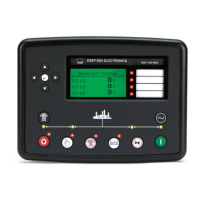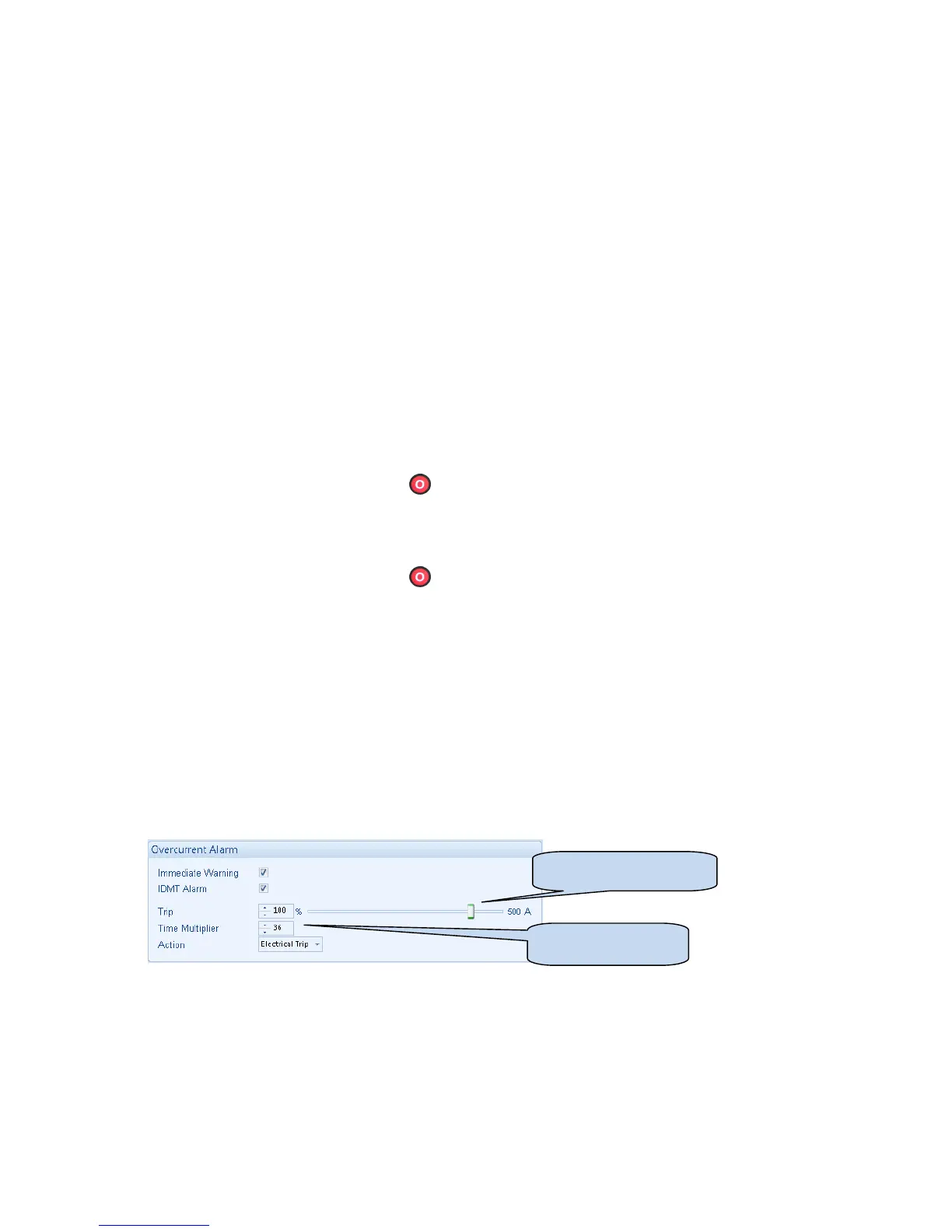Protections
87
7.7 HIGH CURRENT SHUTDOWN / ELECTRICAL TRIP ALARM
The overcurrent alarm combines a simple warning trip level with a fully functioning IDMT curve for
thermal protection.
7.7.1 IMMEDIATE WARNING
If the Immediate Warning is enabled, the controller generates a warning alarm as soon as the Trip
level is reached. The alarm automatically resets once the generator loading current falls below the
Trip level (unless All Warnings are latched is enabled). For further advice, consult your generator
supplier.
7.7.2 IDMT ALARM
If the IDMT Alarm is enabled, the controller begins following the IDMT ‘curve’ when the trip level is
passed.
If the Trip is surpassed for an excess amount of time the IDMT Alarm triggers (Shutdown or Electric
trip as selected in Action).
High current shutdown is a latching alarm and stops the Generator.
Remove the fault then press Stop/Reset to reset the module.
High current electrical trip is a latching alarm and removes the generator from the load, before
stopping the Generator after the off load cooling timer.
Remove the fault then press Stop/Reset to reset the module.
The higher the overload, the faster the trip. The speed of the trip is dependent upon the fixed formula:
T = t / ((IA / I
T
) – 1)
2
Where: T is the tripping time in seconds
I
A
is the actual current of the most highly loaded line (L1 or L2 or L3)
I
T
is the delayed over-current trip point
t is the time multiplier setting and also represents the tripping time in seconds at twice full load (when I
A
/ I
T
= 2).
Factory settings for the IDMT Alarm when used on a brushless alternator are as follows (screen
capture from the DSE Configuration Suite PC software :
These settings provide for normal running of the generator up to 100% full load. If full load is
surpassed, the Immediate Warning alarm is triggered, the set continues to run.
The effect of an overload on the generator is that the alternator windings begin to overheat; the aim
of the IDMT alarm is to prevent the windings being overload (heated) too much. The amount of time
that the set can be safely overloaded is governed by how high the overload condition is.
With typical settings as above, the tripping curve is followed as shown below.
I
T
(Trip setting value)
t
(time multiplier)

